The L-4 Grasshopper
The B-26 was not the only plane used by the 344th Bomb Group
I received an e-mail from Martin Olesen from the Netherlands;
“Hello Sir.
I’ve been looking for info on the Grasshoppers attached to the 344th for a long time and I saw the post about Corky Korkowski and Wild Bill Young and their adventure in the L-4 Grasshopper. I was reading the post about “Wild” Bill Young and his flight below the Eiffel Tower. “Corky” Korkowski said they took a Grasshopper and bombed some tents with snowballs.
I own a Piper L-4 Grasshopper that was attached to the 344BG.
I wonder if there are any pictures within the group showing those grasshoppers.
Do you have any info or is it possible to get the contact info to Corky?
Best regards.
Martin Olesen”
I had no idea what an L-4 Grasshopper is, but the section of the post he was referring to was a quote from 344th pilot Cory Korkowski and is as follows;
“Wild Bill Young was a good friend until he died about 10 years ago. He became a doctor after WWII and practiced on an island off the east coast. I last saw him in Washington DC when he retired a few days before his death. He was well known for doing dangerous things in airplanes around Barksdale Field, La and Paris France. We were B-26 pilots both places. He was charged with buzzing many times. Once before going overseas in WWII he paid a fine for buzzing and he told me that when he went overseas the military dropped about 10 buzzing charges. Rumors put that figure at 17. As an instructor pilot he gave me a required flight test. He said he knew that I could fly so we would try to learn something new about the plane. We tried to see how fast we could go in a dive and then we buzzed the commander’s tent. After a fresh snow, he made a bunch of snowballs and took a small plane we called a grasshopper and bombed some tents. His plane was so badly damaged on a mission that he knew he had to crash so he first buzzed the commander’s tent.”
I told Martin that Corky passed a couple of years ago and that I talked to him a couple of times. Martin went on to tell me that he now owns one of the L-4s retired from the 344th BG. It was based on the Piper Cub and that he had rebuilt it a few years ago. He still wants to paint the triangle representing the 344th BG. Through research, Olesen became aware that his plane once flew as a “HACK” for the 344th. It started it’s life in the 119th artillery group, but ended up with the 344th. A HACK is used to transport VIPs and mail and other such chores.
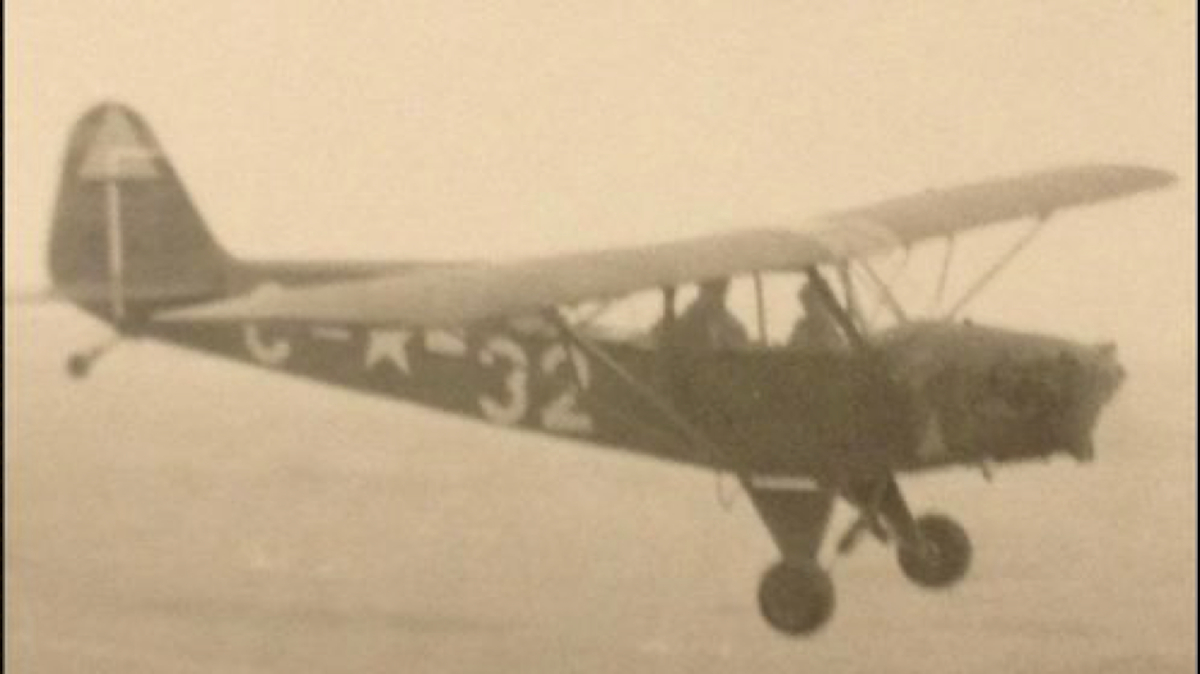
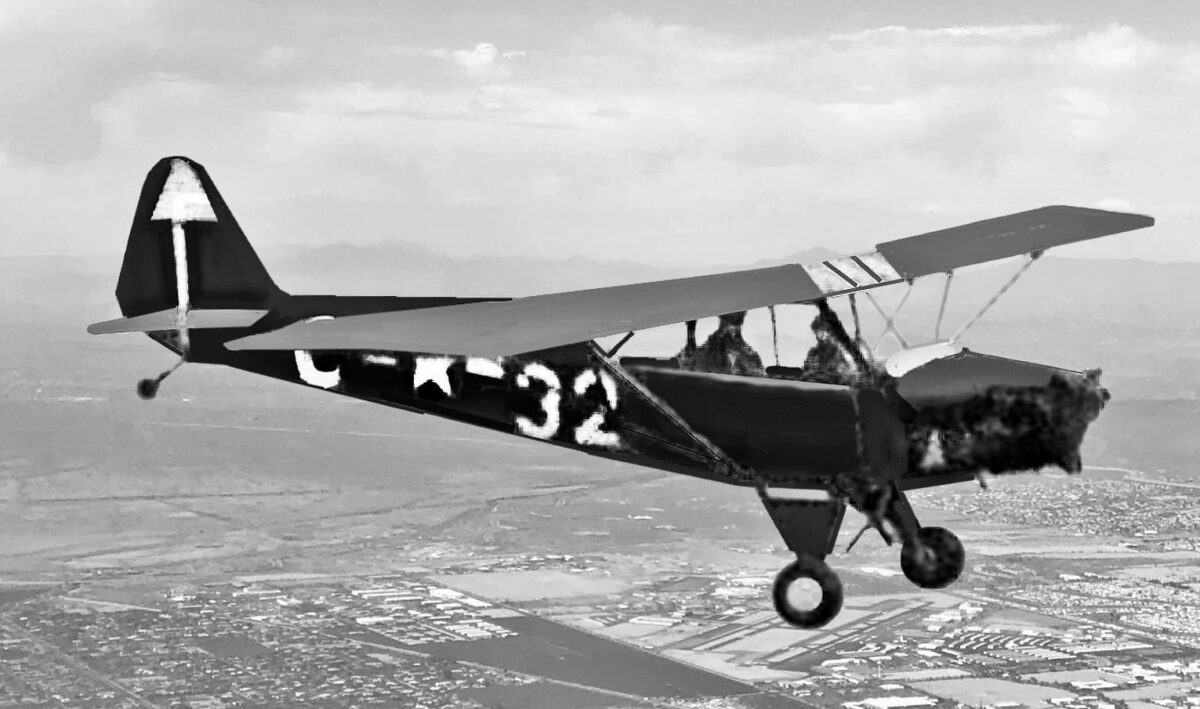
Olesen’s plane, 43-30216, was sold from an Army Depot in Paris in 1946 and flown to Eindhoven, Netherlands together with 8 other L-4’s. The picture was taken the day they were flown to Holland by US pilots. The picture was attached to the Dutch FAA files for this very Grasshopper L-4
It is in Denmark now! Here are some recent photos of it.
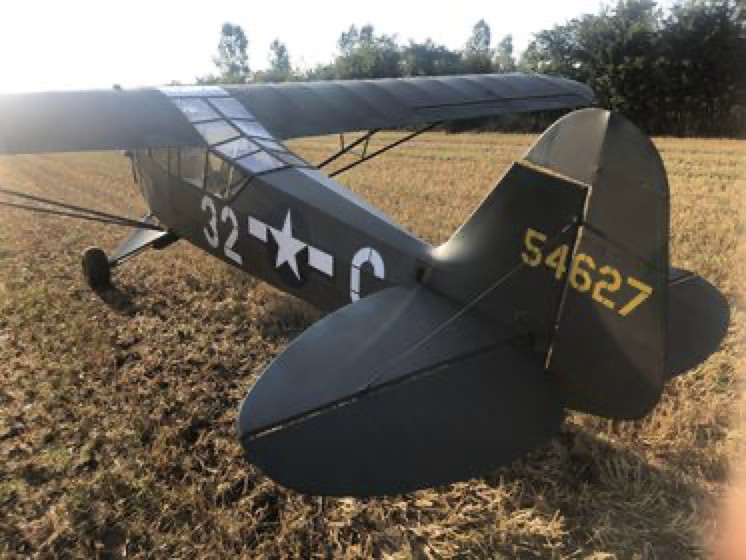
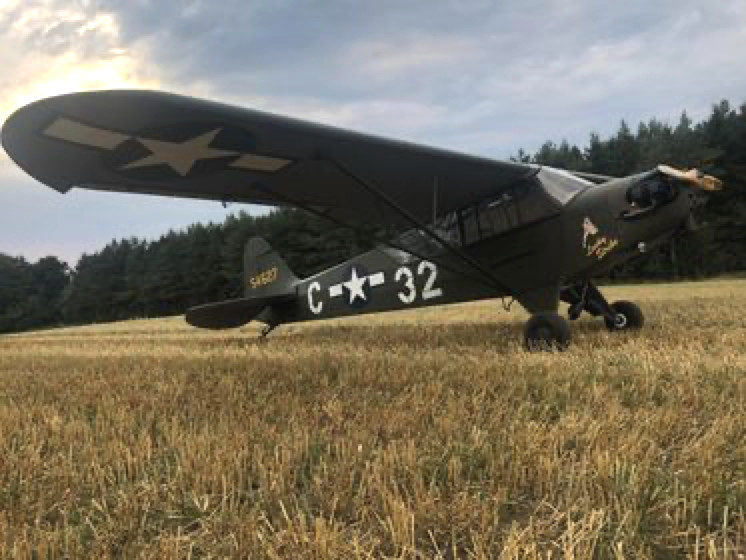
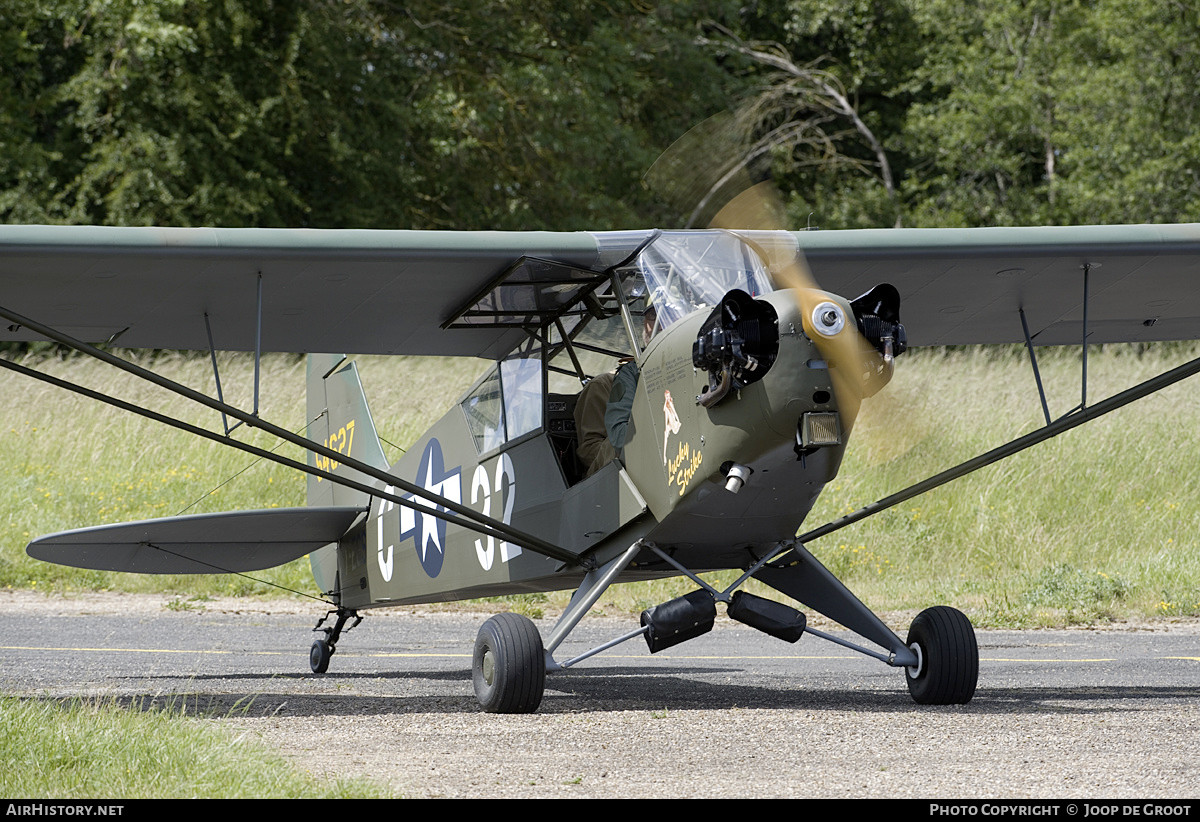
Olesen- “Actually, I only know of two L-4’s that were used by the 344th BG. Here are pictures of the other one..”
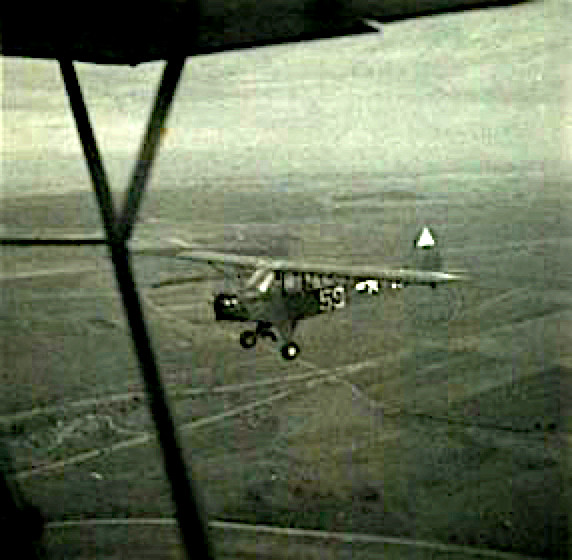
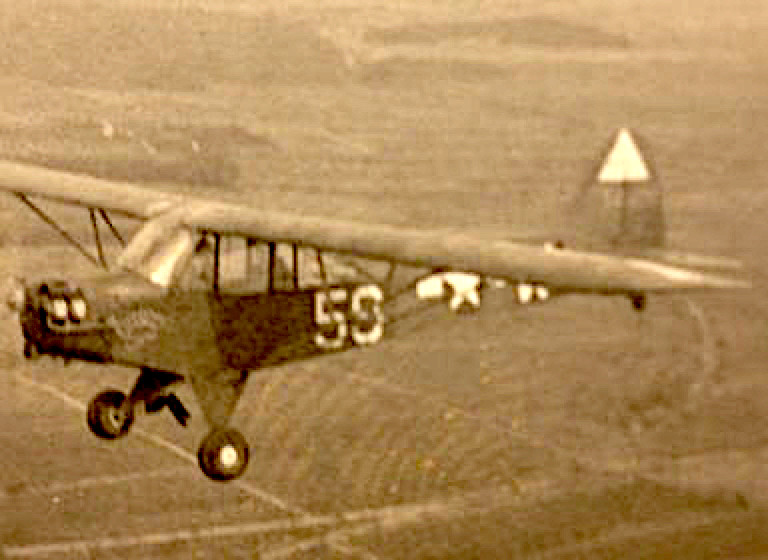
During World War II, L-4 Grasshoppers performed a wide variety of functions throughout the world such as artillery fire direction, pilot training, glider pilot instruction, courier service and front-line liaison. The Piper L-4 Grasshopper derived from the Piper Cub flew as early as 1930. By 1941, the US Army looking for a reliable light observation and liaison aircraft, ordered more than forty aircraft and were designated as the L-4, to which the “L” identified the aircraft series as “liaison” it included improvements to make the system war ready.
The L-4 Grasshopper had a high-wing monoplane design that was braced at the fuselage, It had seating for two. The its light weight and reliability endeared it to her crews providing service in war and peacetime.
Some general info about the L-4 Grasshopper-
During World War II, L-4 Grasshoppers performed a wide variety of functions throughout the world such as artillery fire direction, pilot training, glider pilot instruction, courier service and front-line liaison. The Piper L-4 Grasshopper derived from the Piper Cub flew as early as 1930. By 1941, the US Army looking for a reliable light observation and liaison aircraft, ordered more than forty aircraft and were designated as the L-4, to which the “L” identified the aircraft series as “liaison” it included improvements to make the system war ready.
The L-4 Grasshopper had a high-wing monoplane design that was braced at the fuselage, It had seating for two. The its light weight and reliability endeared it to her crews providing service in war and peacetime.
Some links:
https://www.americanairmuseum.com/aircraft/21776
https://www.airhistory.net/orig-event/1777/L-birds-Back-to-Normandy-2019


